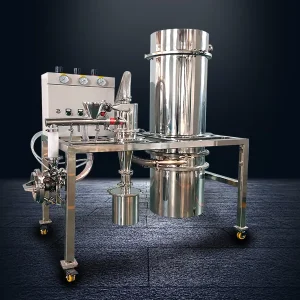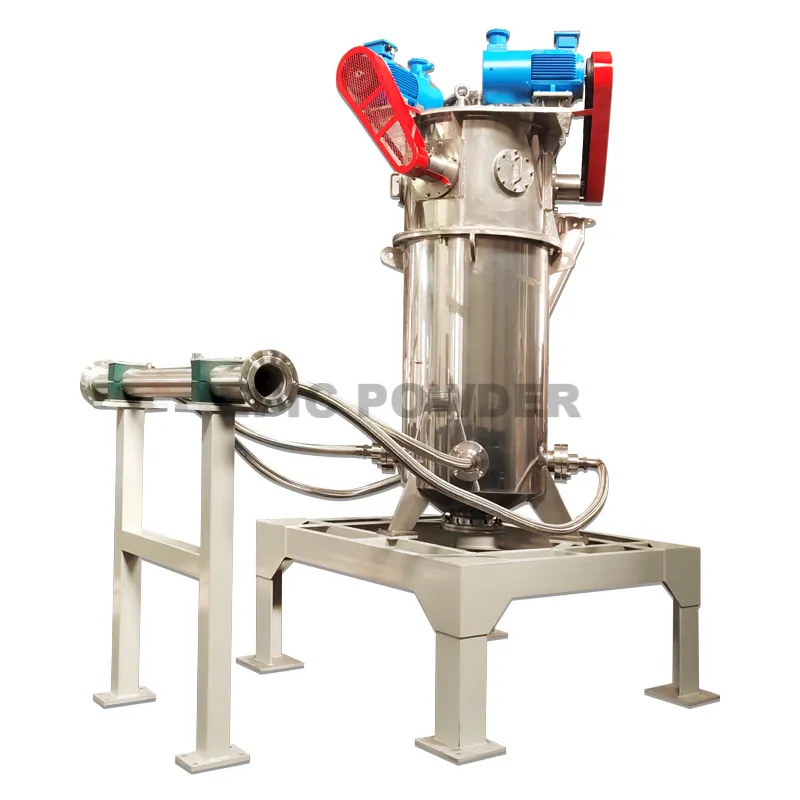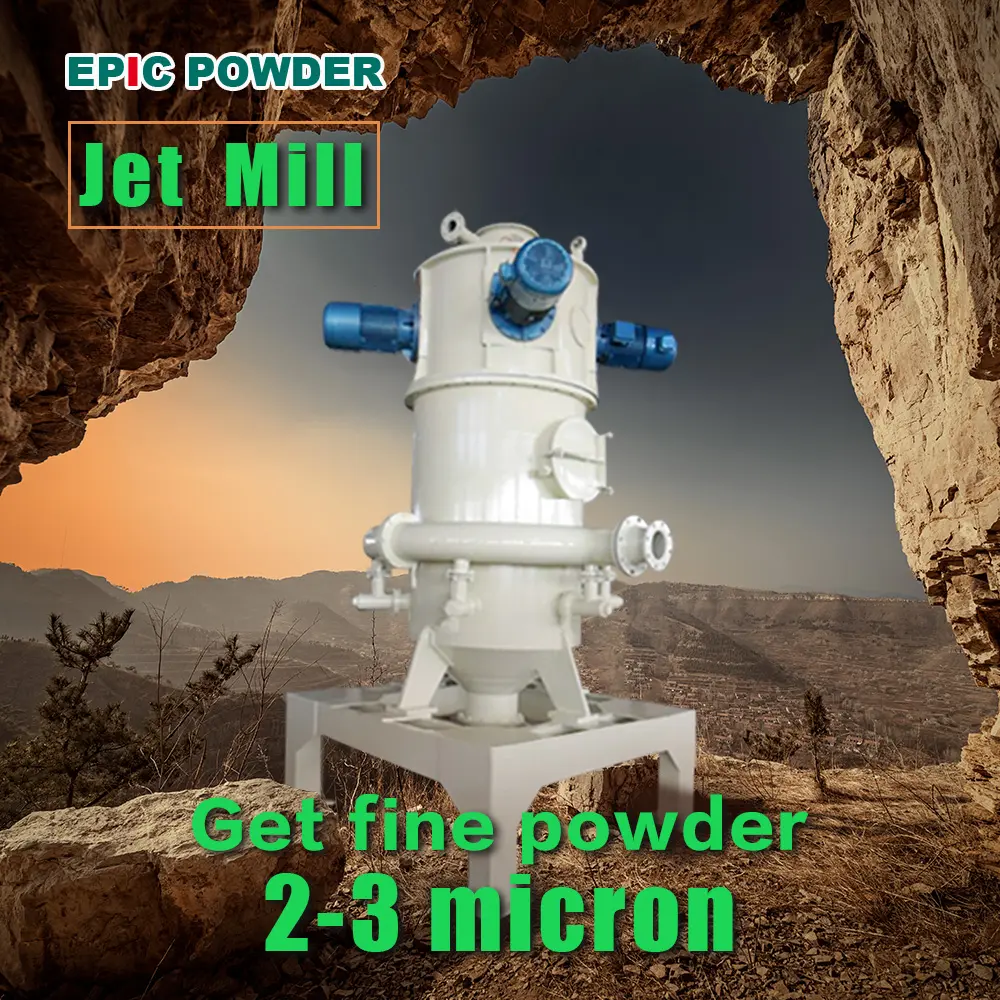Introduction of Jet Mill
The airflow pulverizer, also known as a jet mill or fluid energy mill, is one of the most important ultrafine grinding equipment. Equipped with internal classification functionality or assisted by external classification devices, the jet mill can produce powder products with a fineness of d97 = 3–5 μm, with production capacities ranging from several dozen kilograms per hour to several dozen tons per hour.
Products processed by airflow pulverization feature a narrow particle size distribution, regular particle shape, and high purity. Currently, jet mills mainly come in several types. They include flat (disc), loop, opposed-jet, fluidized-bed opposed-jet, cyclone, and target-style models, with dozens of specifications available. The most commonly used types are flat, fluidized-bed, and opposed-jet mills.
Classification and Applications of Jet Mills
The particle size of jet mill products typically ranges from 1 to 30 μm. Its feed size strictly controlled below 1 mm under normal conditions. Jet mills are widely used for ultrafine processing of materials. Rare earth elements, various hard marbles, kaolin, talc, and other non-metallic minerals of medium hardness are all applicable.
The upper limit of the particle size of jet-milled products depends on the solid content in the mixed airflow and is inversely proportional to energy consumption. When the solid content is low, the product can achieve a d95 of 5–10 μm. With pre-crushing to reduce feed size, products with an average particle size of 1 μm can be obtained. Besides fine particle size, jet-milled products also exhibit a narrow size distribution, smooth particle surfaces, regular shapes, high purity, high activity, and excellent dispersibility. Additionally, due to the Joule-Thomson cooling effect caused by adiabatic expansion of compressed gas during grinding, jet mills are also suitable for ultrafine grinding of low-melting-point and heat-sensitive materials.
Flat (Disc) Jet Mill

The flat jet mill, also known as a horizontal disc jet mill, operates by ejecting high-pressure gas at supersonic speeds through nozzles. The material is accelerated by a Venturi nozzle and sent into the grinding chamber, where it undergoes high-speed circulation and is pulverized by impact, collision, and friction. Under centrifugal force, coarse particles are thrown toward the chamber wall for further grinding, while fine particles are carried by the airflow and collected. Its advantages are: simple structure, easy operation. The disadvantages include: damage the grinding chamber when processing hard materials, leading to product contamination.
Energy consumption increases exponentially as the target particle size decreases, with most energy wasted as ineffective work. Typically it achieves a D50 of around 1 μm.
Fluidized-Bed Jet Mill

Commonly used in industries such as ceramics, chemical raw materials, refractories, battery materials, and pharmaceuticals for ultrafine grinding, deagglomeration, and particle shaping.
During operation, high-pressure air is injected into the grinding chamber through multiple nozzles at high speed. The fed material is accelerated by the airflow and pulverized at the intersection points of the nozzles via collisions and friction. The particles then enter the classification chamber, where coarse particles settle and return for further grinding. The cyclone separatoe will carry out and collect the qualified fine particles.
Opposed-Jet Mill

Also known as a counter-jet mill or reverse jet mill (with the Majac type as a typical example).
In operation, two streams of accelerated material and high-speed airflow collide at a specific point along a horizontal line. It achieves pulverization. The resulting particles enter the classification chamber, where a rotating classifier separates them—coarse particles remain at the periphery. They return for re-grinding, while fine particles exit and are collected after gas-solid separation.
Its advantages are: high-speed interparticle collisions ensure strong impact forces, fast grinding, and high energy efficiency.
Produces finer particles with reduced wear and contamination. Suitable for hard, brittle, or sticky materials. Disadvantages like: requires a large installation space, high energy consumption, relatively wide particle size distribution.
Current Status of Jet Mill Technology in China
China’s jet mill manufacturing industry maintains high standards in automation, production capacity, and model variety, with relatively mature technology.
About Epic Powder
With decades of expertise and European core technology, Epic Powder specializes in advanced ultrafine grinding solutions. Whether for minerals, chemicals, or high-tech materials, Epic Powder delivers tailored solutions to meet your production needs.